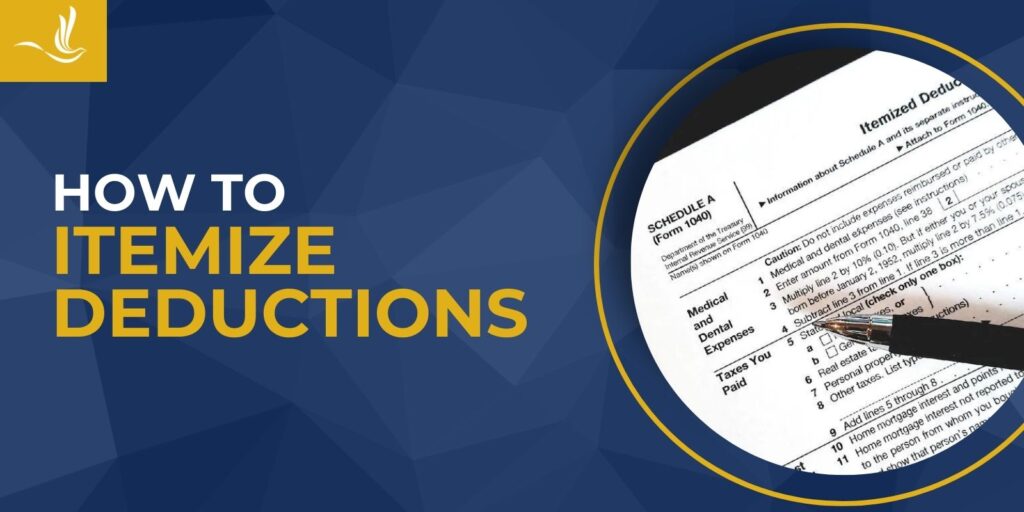
Itemizing deductions is a valuable strategy for maximizing tax savings. It allows taxpayers to claim a range of eligible expenses that can significantly reduce their taxable income. The standard deduction provides a straightforward way to reduce taxable income. On the other hand, itemizing deductions involves listing individual expenses to potentially achieve a greater tax benefit. This article will guide you through the process of itemizing deductions, helping you make informed decisions to optimize your tax situation.
Understanding Itemized Deductions
Itemized deductions are specific expenses that taxpayers can deduct from their adjusted gross income (AGI) to reduce their taxable income. These deductions cover various categories, including medical expenses, state and local taxes, mortgage interest, charitable contributions, and certain casualty and theft losses.
Key Categories of Itemized Deductions
There are several types of expenses you can deduct when itemizing. Here are the most common expenses you can deduct when itemizing your deductions.
Medical Expenses
If you had a lot of unreimbursed medical expenses during the year you can deduct a certain amount if you itemize your deductions. These include out-of-pocket medical costs, health insurance premiums, and long-term care expenses. However, keep in mind that deductible medical expenses must exceed the current maximum of 7.5% of your AGI to be eligible. Long-term care expense deductions cannot exceed 10% of your AGI and will depend on your age.
State and Local Taxes
You can deduct state income taxes or state sales taxes, and local property taxes if you itemize. Note that there is a $10,000 cap on the total deduction for state and local taxes. There are several limitations regarding prepaid taxes and refunded taxes. Be sure to check with a qualified tax professional for clarification.
Mortgage Interest
Additionally, if you itemize, interest paid on mortgage loans for your primary residence and a second home can be deducted. Be aware of the limits on mortgage interest deduction based on loan amounts. You can deduct the first $750,000 of home mortgage interest. You can also deduct home equity loan or line of credit interest paid if you used the funds to buy, build or seriously improve your home the loan is secured under.
Charitable Contributions
You can deduct cash and non-cash contributions made to qualified charitable organizations. Keep detailed records, including receipts, for all charitable donations. Cash contributions that can be deducted are limited to 60% of your AGI. Other contributions are limited to between 20 and 50% of your AGI, depending on the type of contribution.
Casualty and Theft Losses
You can deduct casualty and theft losses on your federal income tax return under certain conditions. Casualty and theft losses refer to unreimbursed damage, destruction, or loss of your property resulting from events such as natural disasters, accidents, vandalism, or theft. The total deductible losses for the year must exceed 10% of your AGI for the year. You must also subtract $100 from this loss. For example, a taxpayer whose AGI is $50,000 can only deduct losses that amount to more than $5,000. If their total loss was $5,500, they could deduct $5,400 on Schedule A.
Steps to Itemize Deductions
- Gather Documentation: Collect receipts, statements, and other relevant documents for each eligible deduction category. Be sure you maintain accurate records to substantiate your claims in case of an IRS audit.
- Compare to Standard Deduction: Calculate your potential itemized deductions and compare them to the standard deduction. Choose the option that results in the greatest tax savings.
- Complete Schedule A: Use IRS Schedule A to list and calculate your itemized deductions. Ensure accuracy and review the instructions to avoid errors.
- File Your Tax Return: When filing your tax return, choose to itemize deductions and include Schedule A. File your return electronically for faster processing and to reduce the risk of errors.
Tax Help for Taxpayers Who Itemize Deductions
Itemizing deductions requires careful consideration of your eligible expenses and diligent record-keeping. While it may involve more effort than taking the standard deduction, the potential tax savings can make it a worthwhile endeavor. Stay informed about changes in tax laws, seek professional advice when needed, and make strategic decisions to optimize your financial situation. By following these steps, you can navigate the itemization process with confidence and potentially reduce your tax liability. Optima Tax Relief is the nation’s leading tax resolution firm with over a decade of experience helping taxpayers with tough tax situations.
If You Need Tax Help, Contact Us Today for a Free Consultation